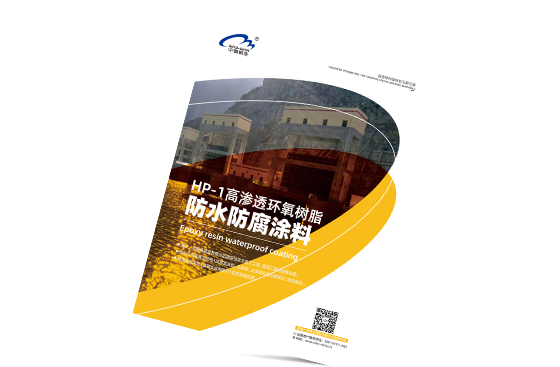Exploring the Endless Possibilities of UHPC in Construction
Release Time:
2024-09-02 09:00
Exploring the Endless Possibilities of UHPC in Construction
Table of Contents
1. Introduction to Ultra-High-Performance Concrete (UHPC)
2. The Unique Properties of UHPC
2.1 Strength and Durability
2.2 Aesthetic Versatility
3. Applications of UHPC in Construction
3.1 Structural Elements
3.2 Facade Systems
3.3 Infrastructure Projects
4. Benefits of Using UHPC
4.1 Cost-Effectiveness Over Time
4.2 Environmental Impact
5. Challenges in Implementing UHPC
5.1 Material Costs
5.2 Technical Knowledge Requirements
6. Future Trends in UHPC Applications
7. Frequently Asked Questions about UHPC
8. Conclusion
1. Introduction to Ultra-High-Performance Concrete (UHPC)
Ultra-High-Performance Concrete (UHPC) represents a significant advancement in concrete technology, offering unique benefits that traditional concrete cannot match. With its extraordinary mechanical and durability properties, UHPC has emerged as a material of choice in modern construction projects. As we explore the endless possibilities of UHPC, it becomes evident how it is revolutionizing the way we design and construct buildings and infrastructure.
2. The Unique Properties of UHPC
UHPC is characterized by its exceptional strength, durability, and versatility. Understanding these properties is crucial for appreciating the role of UHPC in contemporary construction.
2.1 Strength and Durability
One of the most remarkable features of UHPC is its compressive strength, which can exceed 150 MPa, significantly higher than that of conventional concrete. This strength allows for thinner structural elements without compromising safety or integrity. Moreover, UHPC has enhanced resistance to environmental factors, including freeze-thaw cycles, chemical attacks, and abrasion. This durability translates to longer service life and reduced maintenance costs.
2.2 Aesthetic Versatility
Beyond its structural capabilities, UHPC offers a wide range of aesthetic possibilities. It can be cast into various shapes, textures, and colors, enabling architects to push the boundaries of design. The smooth surface finish of UHPC can create visually stunning facades and architectural elements, leading to innovative structures that stand out in urban landscapes.
3. Applications of UHPC in Construction
The versatility of UHPC allows it to be utilized in numerous applications across different sectors of construction. Its properties make it suitable for both structural and decorative purposes.
3.1 Structural Elements
In structural applications, UHPC is increasingly used for beams, slabs, and columns. Its high strength enables the design of lighter structures, reducing material usage and transportation costs. Additionally, UHPC can be used in precast elements, allowing for efficient production and quick installation on construction sites.
3.2 Facade Systems
The aesthetic qualities of UHPC make it an ideal choice for facade systems. Designers can use UHPC panels to create striking exterior designs that also provide thermal insulation and weather resistance. These panels can be tailored to meet specific architectural requirements, making UHPC a preferred choice for modern building facades.
3.3 Infrastructure Projects
UHPC is also making significant contributions to infrastructure projects, such as bridges and tunnels. Its durability and strength make it suitable for high-load applications, while its ability to withstand aggressive environmental conditions ensures longevity. Additionally, UHPC can facilitate the creation of slender bridge designs, reducing material costs and enhancing aesthetic appeal.
4. Benefits of Using UHPC
The adoption of UHPC in construction offers numerous benefits that extend beyond its mechanical properties.
4.1 Cost-Effectiveness Over Time
While the initial cost of UHPC may be higher than traditional concrete, its long-term cost-effectiveness is undeniable. The durability and reduced maintenance requirements of UHPC result in lower lifecycle costs. Projects that incorporate UHPC often experience decreased repair rates and extended service life, justifying the initial investment.
4.2 Environmental Impact
Using UHPC can contribute to more sustainable construction practices. Its strength allows for reduced material usage, minimizing the environmental footprint of construction projects. Furthermore, the longevity of UHPC structures leads to lower emissions associated with repairs and rebuilds.
5. Challenges in Implementing UHPC
Despite its many advantages, the implementation of UHPC comes with specific challenges that must be addressed.
5.1 Material Costs
The cost of raw materials for UHPC is generally higher than for traditional concrete, which can be a barrier for some projects. The quality of materials, such as high-performance fibers and additives, also affects pricing. However, it is essential to weigh these costs against the long-term benefits of using UHPC.
5.2 Technical Knowledge Requirements
UHPC requires a deeper understanding of concrete technology for proper application. This need for technical expertise can limit its widespread use. Training and education for architects, engineers, and construction professionals are crucial to leveraging the full potential of UHPC.
6. Future Trends in UHPC Applications
As technology advances, the applications of UHPC are likely to expand. Emerging trends include the integration of smart materials that can monitor structural health, as well as advancements in 3D printing technologies using UHPC. These innovations promise to redefine construction methodologies, making UHPC a key player in the future of construction.
7. Frequently Asked Questions about UHPC
What is UHPC and how does it differ from traditional concrete?
UHPC is a type of concrete with superior strength and durability compared to traditional concrete. It typically has a compressive strength of over 150 MPa, which is significantly higher than standard concrete.
What are the key advantages of using UHPC?
The primary advantages of UHPC include its high strength, durability, aesthetic versatility, and long-term cost-effectiveness. These properties make UHPC suitable for a wide range of applications in construction.
Can UHPC be used for outdoor applications?
Yes, UHPC is highly resistant to environmental factors, making it ideal for outdoor applications, including facades, bridges, and elements exposed to harsh weather conditions.
Is UHPC more expensive than traditional concrete?
While the initial costs for UHPC can be higher due to the quality of materials, its long-term benefits, such as reduced maintenance and extended service life, often justify the investment.
What is the future of UHPC in construction?
The future of UHPC in construction looks promising, with ongoing research and development leading to new applications, including smart materials and 3D printing technology. As awareness and knowledge about UHPC grow, its adoption is expected to increase.
8. Conclusion
Ultra-High-Performance Concrete (UHPC) is revolutionizing the construction industry with its unique properties and versatile applications. As we have explored, UHPC not only enhances structural integrity and aesthetic appeal but also contributes to sustainable building practices. While challenges remain in terms of costs and technical knowledge, the long-term benefits of UHPC far outweigh these hurdles. The future of construction is bright with UHPC at the forefront, paving the way for innovative designs and enhanced durability in our built environment.
Latest News
High-Performance Cement Additive Redefines Green Construction Materials with Unmatched Strength and Sustainability
Effortless Strength: The Advantages of Carbon Fiber Wrap for Concrete Applications Table of Contents 1. Introduction to Carbon Fiber Wrap 2. What is Carbon Fiber Wrap? 3. Benefits of Carbon Fiber Wrap for Concrete 3.1 Enhanced Durability 3.2 Lightweight Properties 3.3 Flexibility and Versatility 3.4 Cost-Effectiveness
Concrete is a widely used building material known for its durability and strength. However, over time, environmental factors, heavy loads, and general wear can lead to the deterioration of concrete surfaces. Effective concrete repair is crucial for maintaining structural integrity and extending the lifespan of concrete installations. This guide explores essential methods and considerations for pro
Elevating Aesthetics with UHPC Facade Solutions: Transforming Architectural Design Table of Contents 1. Introduction to UHPC Facade Solutions 2. What is Ultra-High Performance Concrete? 3. The Advantages of Using UHPC for Facades 3.1 Exceptional Durability and Longevity 3.2 Aesthetic Versatility and Design Freedom 3.3 Sustainability and Environmental Benefits 4. Applications of UHPC in Modern Arch
Carbon fiber wrap is an advanced material that has gained traction in various industries, including construction and decorative design. Its unique properties make it an ideal choice for applications where strength, lightweight characteristics, and aesthetic appeal are paramount. In this article, we will explore the benefits, uses, and considerations of carbon fiber wrap, particularly within the co
Product Documentation
If you do not have a comprehensive understanding of our products, we have uploaded relevant technical documents for you to download and reference so that you can better understand our product usage and technical parameters
View More

Online Message











